Air-Isolation Transfer
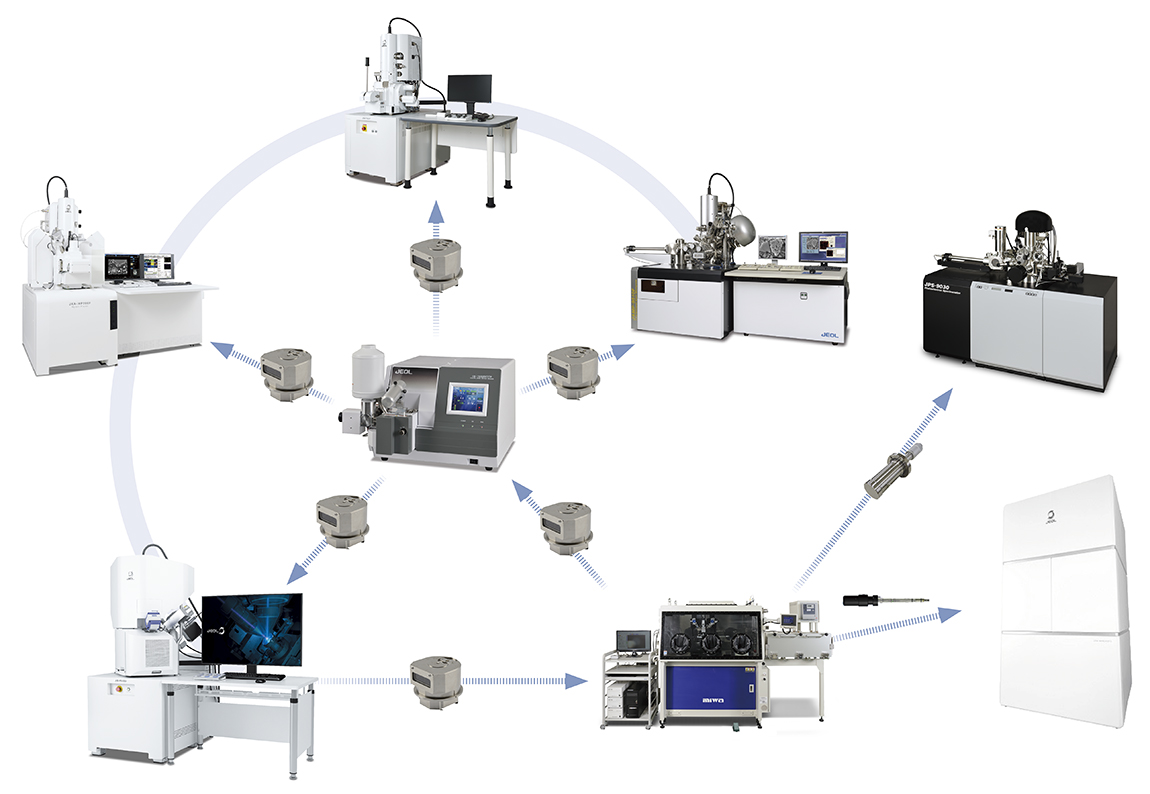
Air-Isolation Transfer System
Materials used in batteries contain highly reactive lithium. There is a risk of alteration when exposed to air. Therefore, an air-isolated environment such as a dry room is required during manufacturing, and specimen preparation, observation, and analysis must be performed in an air-isolated environment. Air-isolated instruments and integrated systems that connect different analytical devices are effective for lithium-ion battery analysis.
JEOL's instrument lineup offers systems that enable processing, observation, and analysis within an air-isolated environment.
A movie introducing Air Isolation System is available.
Click the
play button in the box above, and the movie starts. (4 min 12 sec).
Air-Isolated Processing and Observation Tool
The use of a transfer vessel enables air-isolated transfer between analysis instruments for seamless
integration.
These transfer vessels consist of various specimen holders sealed with base parts and caps, as shown in the
figure below.
For TEM and XPS, where transfer vessels cannot be used, dedicated air-isolation holders for analysis are
available to maintain an air-isolated environment.
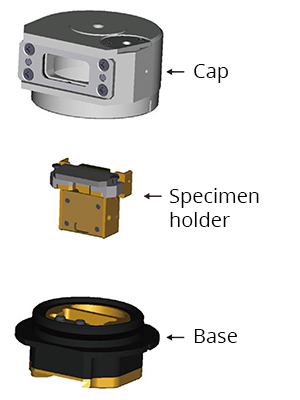
CP-SEM compatible
CP-EPMA(Electron Probe Micro Analyzer) compatible transfer vessel
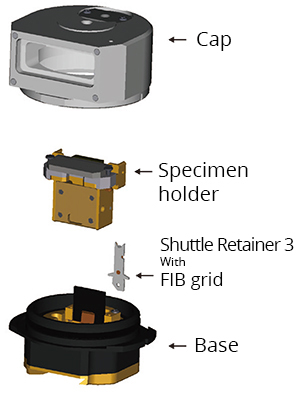
CP-FIB compatible transfer vessel
(CP-FIB-SEM-TEM linkage)

CP-AES compatible transfer vessel
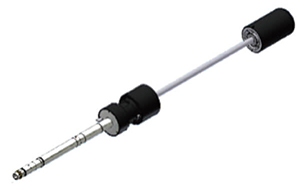
TEM air-isolation observation/analysis holder
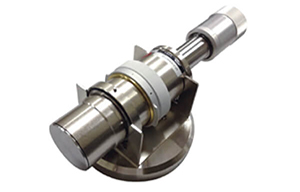
XPS air-isolation observation/analysis holder
Processing and observation tools for microareas selected from wide cross-sectional regions
The holder shown in the figure below can accommodate a TEM holder tip, enabling
both wide-area cross-sectioning using CP and thin-film milling using FIB-SEM within the same holder.
Another advantage of this holder is that the FIB grid does not need to be handled directly with tweezers
after thin sectioning; instead, the TEM tip with the mounted FIB grid is placed in the holder. This system
significantly reduces the risk of damage when handling small TEM specimens. Its air-isolation design also
makes it ideal for handling TEM samples in a glove box, especially for air-sensitive materials such as
battery components.
The procedure is as follows: During cross-sectioning, the battery is clipped into the clip-type holder and
the CP is used to prepare the cross-section. Once the cross-section is complete, the holder is capped and
transferred to the FIB-SEM in an air-isolated environment for observation and analysis. When the desired
TEM observation area is identified, a block is processed by FIB and transferred to the TEM holder tip
using a probe. Lamella thinning is then performed by FIB to achieve a thickness suitable for TEM
observation. The block is capped again and transferred to the glove box without air exposure, where the
TEM tip is installed on the air-isolated TEM holder and removed from the glove box.
This tool is designed to enable TEM observation of selected areas from a wide cross-sectional region
efficiently and safely.
CP-FIB compatible transfer vessel

CP-FIB-SEM-TEM linkage
CP cross section and thin film extraction position determination
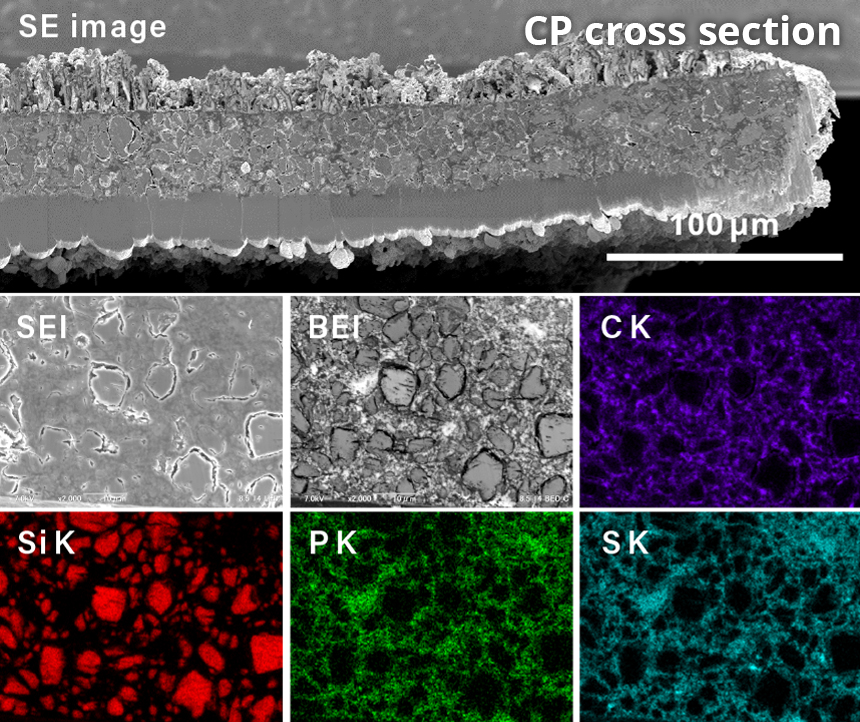
SEM image(secondary electron) and EDS map
FIB thin film milling
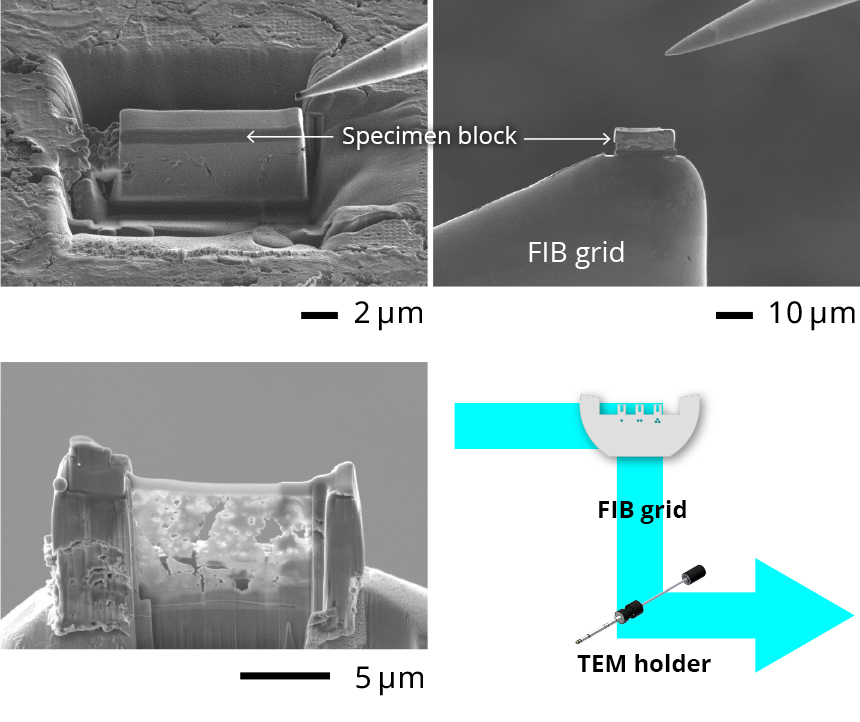
TEM observation/analysis
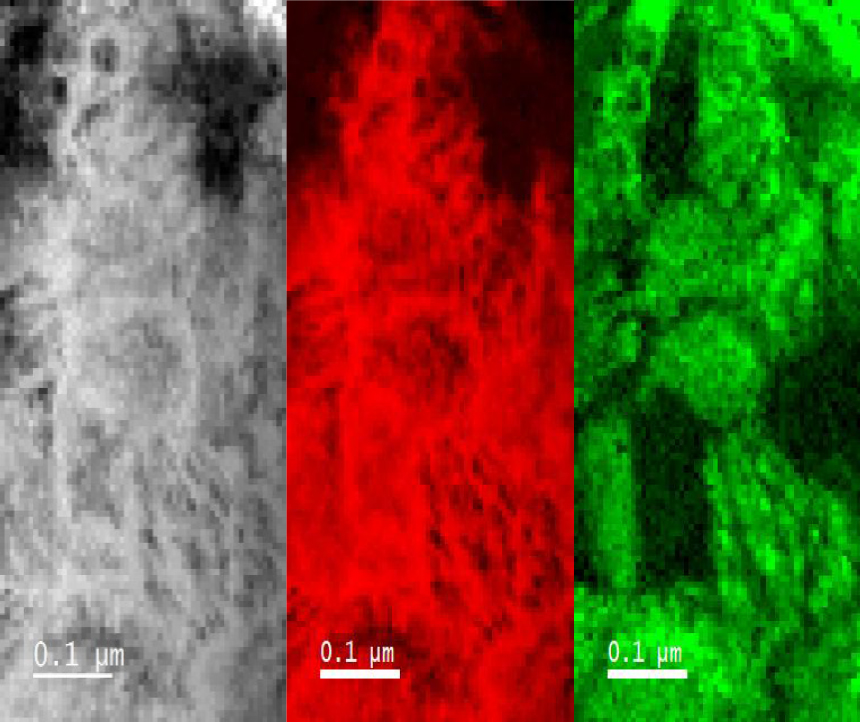
ADF-STEM image and EELS map
Sample courtesy:
Prof. Atsunori Matsuda
Department of Electrical and
Electronic Information Engineering
Toyohashi University of Technology
A movie introducing Specimen preparation of internal target -
battery multi-layers is available.
Click the play button in the box above, and the movie starts. (1 min
21 sec).
Click the button below to return to Battery TOP
Contacts
JEOL provides a variety of support services to ensure that our customers can use our products with peace of mind.
Please feel free to contact us.
